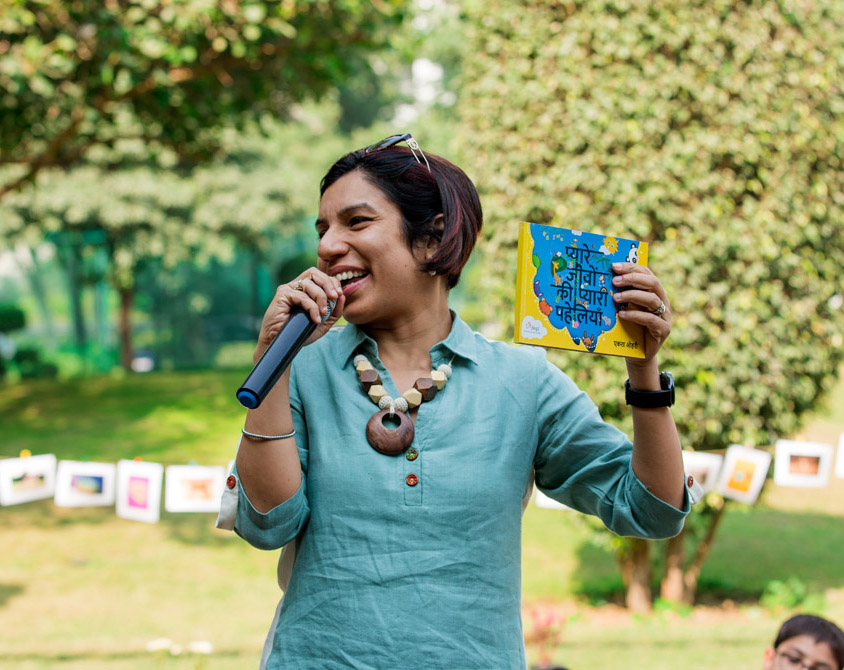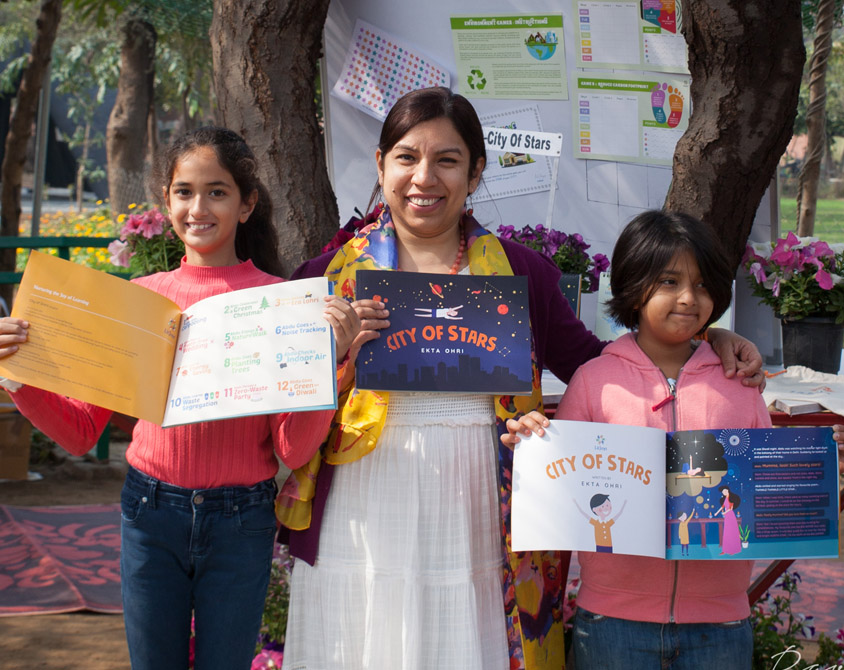The Child is the Father of the Man
It was a late-September evening. The Sun, a tired ball of fire, was just beginning to doze off on the western horizon. The vast expanse of the lush green countryside, dotted with hutments, was suffused with a warm, orange glow. Not a soul was to be seen – save a bunch of children playing football and a smallish herd of buffaloes lolling in the muddy, shallow pool. Right through the heart of this serenity, ran a solitary railway track, on which a diesel locomotive chugged along, diligently – the rhythmic clanking of the wheels and the shrill, piercing sound of the whistle didn’t appear to be an aberration, though. It was, as if, the train was like a marching band playing a dirge for the dying Sun.
Like a thousand evenings before, and hence, the Rajdhani Express was speeding through the North Indian plains. All of a sudden, my three-year old jumped up in excitement – “Look, Daddy! Qutub Minar!”
I looked towards where he was pointing. It was a nondescript brick chimney, the kind that seems to spring up from nowhere – a drab, sullen and singularly unremarkable appendage to a brick kiln.
I tried to reason with him, without much success. “No, Dear”, I said, “That’s not the Qutub Minar. It’s just a brick chimney.” To my three-year old, who had only seen a few grainy pictures of the Qutub Minar, anything brownish-red in colour and conical in shape was a Qutub Minar!
“What a travesty!” I thought. “Need to rectify it”, I told myself. So, on a bright Saturday morning after we were back in Delhi, we left home to redeem our pledge. Through the entire week leading to that Saturday, I worked on Junior, to create a sense of anticipation for the upcoming visit – I kept on feeding him with morsels of history.
I explained to him how long, long ago there was a fierce battle in the region around Delhi. I told him how the victorious King wanted to commemorate that brilliant victory with an imposing monument – a Tower of Victory. I narrated how thousands of artisans toiled day and night to build an elegant and ageless masterpiece that has withstood the test of time. I described how the Qutub has been a lone sentinel to all the waxing and waning of fortunes that Delhi, the City of Kings, has undergone through the ages…

We packed some biscuits, stocked up on water and with camera and binoculars in hand, started driving towards Mehrauli. Driving for about an hour in a rough north-easterly direction, we came upon the Archaeological Park. A few meters ahead, we took a sharp left and lo! The Qutub was in sight! I looked at Junior and saw his wonderstruck eyes taking in the magnificence of the situation. The faded photos of the Qutub that he had seen on fraying covers of notebooks, hadn’t prepared him for the kind of splendor he was standing in front of.
He strained his neck to reach the top of the tower, a conical apex far, far away. The long, narrow circular and triangular shafts, richly carved, tapered towards the pinnacle making it appear far farther than it actually was. At regular intervals, all through to the top, there jutted out intricately decorated balustrades – positions, maybe, from where a deeply worried Sultan would cast a nervous eye towards the northwest for the faintest signs of Chengiz Khan and his Mongol hordes?
The initial amazement finally gave way to fun and adventure. Junior would run to every nook and corner of the Qutub complex – here discovering a hidden alcove and there, a covered trapdoor. Presently, he took out his make-believe sword and began fighting a pitched battle with imaginary foes. And, of course, all of that was followed by the usual barrage of “What? When? How?” Needless to say, we had a great time re-discovering our past. I didn’t need to ask, but I could feel Junior screaming out, “The Qutub is no goddamn chimney!”

What started as a one-time heritage trip, turned into almost a weekly pilgrimage to one heritage location after another. We were fortunate to live in a city where long forgotten stories are strewn around, carelessly, in every mohalla. And, I wanted to leverage that to the hilt. Since our very first trip to the Qutub, we have covered a number of places from the ‘touristy’ Red Fort to the ‘picnic-y’ Rail Museum. We have also been to offbeat locations like the Flagstaff Tower, a decaying monument perched on the (Kamla Nehru) Ridge where the beleaguered British garrison sought refuge during the 1857 rebellion. There, huddled precariously close to the booming guns from the Kashmiri Gate, they held out till Deliverance came via the Grand Trunk Road, in the form of the thirty year old daredevil, the Irish John Nicholson, who singlehandedly turned the tide of the battle and, with it, the course of Indian history. Forever.

In recounting the story above, my purpose is not to focus on the specific incidents, but to draw attention to more generic concepts of parenting. Parenting, to me, is a sum-total of interactions that leads to an all-round nourishment of your child. Parenting is also tough and requires a fair bit of effort – keeping a five year-old engaged, without taking recourse to the easy (and may I say lazy?) option of gadgets, is no mean task!
In taking my son to all those excursions, it was my objective to build on his natural spirit of inquisitiveness. Rather than limiting him to books or TV, I wanted him to learn through sensory experiences through exploration and fun. By exposing him to India’s shared heritage, I want him to continue opening up his mind and broadening his horizons. I want to inculcate in him a sense of belonging towards his ‘Indianness’ – an appreciation for the rich tapestry of diversity that makes this country great. It is my belief that some of the interactions I described above will help make my child a curious, sensitive and better human being.





Leave a Reply